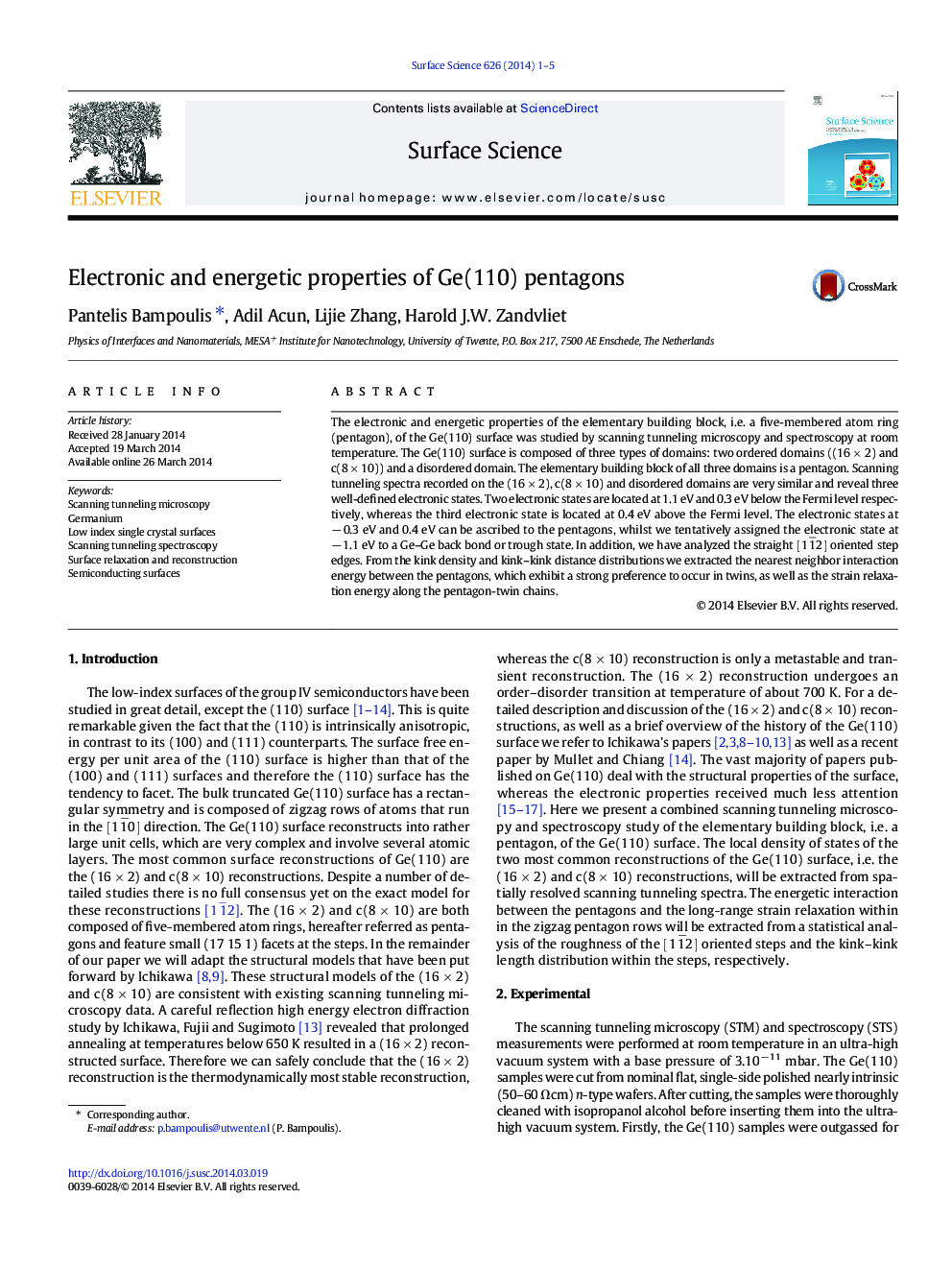| Article ID | Journal | Published Year | Pages | File Type |
|---|---|---|---|---|
| 5422090 | Surface Science | 2014 | 5 Pages |
Abstract
The electronic and energetic properties of the elementary building block, i.e. a five-membered atom ring (pentagon), of the Ge(110) surface was studied by scanning tunneling microscopy and spectroscopy at room temperature. The Ge(110) surface is composed of three types of domains: two ordered domains ((16 Ã 2) and c(8 Ã 10)) and a disordered domain. The elementary building block of all three domains is a pentagon. Scanning tunneling spectra recorded on the (16 Ã 2), c(8 Ã 10) and disordered domains are very similar and reveal three well-defined electronic states. Two electronic states are located at 1.1 eV and 0.3 eV below the Fermi level respectively, whereas the third electronic state is located at 0.4 eV above the Fermi level. The electronic states at â 0.3 eV and 0.4 eV can be ascribed to the pentagons, whilst we tentatively assigned the electronic state at â 1.1 eV to a Ge-Ge back bond or trough state. In addition, we have analyzed the straight 112¯ oriented step edges. From the kink density and kink-kink distance distributions we extracted the nearest neighbor interaction energy between the pentagons, which exhibit a strong preference to occur in twins, as well as the strain relaxation energy along the pentagon-twin chains.
Keywords
Related Topics
Physical Sciences and Engineering
Chemistry
Physical and Theoretical Chemistry
Authors
Pantelis Bampoulis, Adil Acun, Lijie Zhang, Harold J.W. Zandvliet,
